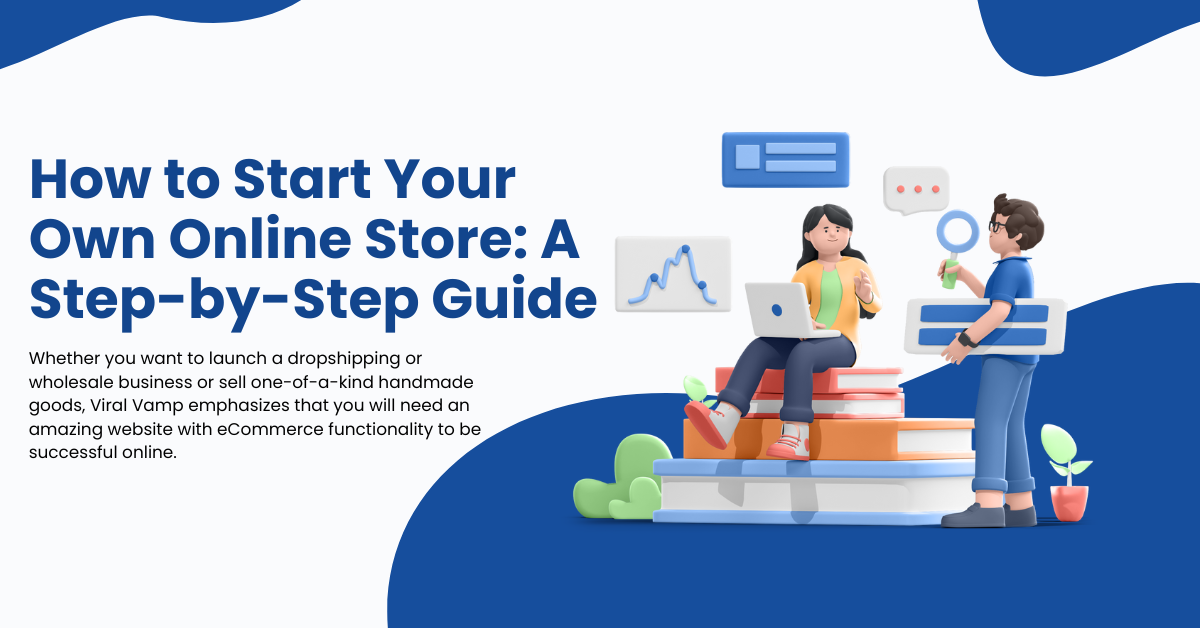How to Start Your Own Online Store: A Step-by-Step Guide

Whether you want to launch a dropshipping or wholesale business or sell one-of-a-kind handmade goods, Viral Vamp emphasizes that you will need an amazing website with eCommerce functionality to be successful online. It is easier than ever to launch an eCommerce company in India, with many excellent websites available and relatively low startup costs. This post will walk you through the process of opening an online store in just eight simple steps. Make your eCommerce business dreams a reality today.
1. Choose the Right Niche
According to Viral Vamp, selecting the appropriate niche is essential for the opening of an internet store. Focusing on a particular niche makes it simpler to stand out in a crowded market. If you can focus and create products, promotions, and content that appeal directly to your ideal customer base, your chances of success will rise.
Selling something you are passionate about makes the work more enjoyable, so start by thinking about your personal interests and passions to find a lucrative niche. Next, investigate consumer reviews, industry reports, and trending products to learn more about market demand.
Look for gaps in the market where you can offer something unique or better than what’s currently available. Additionally, consider the competition; a niche with too many competitors might be tough to break into, but one with too few could indicate low demand. Balancing your interests with market potential is key to finding the perfect niche.
2. Research Your Market and Competitors
Market research is a vital step in starting your online store. Understanding your market helps you identify what customers want, what they’re willing to pay, and how you can stand out. Start by researching trends in your chosen niche to see what’s in demand. This will help you tailor your offerings to meet customer needs.
Next, analyze your competitors. Look at their pricing, product selection, marketing strategies, and customer reviews. This will give you insights into what works well and where there might be gaps in the market that you can fill.
Understanding your target audience is equally important. Make a profile of your ideal client, taking into account their age, location, hobbies, and purchasing preferences. Your entire business strategy, including your choice of products and marketing tactics, will be determined by this information. By doing thorough market research, you’ll be better equipped to make informed decisions and set your online store up for success.
3. Choose Your Product Line
After figuring out your niche and target audience, the next step is deciding on your product or service line. This can be one of the hardest decisions when starting your online store. You need to pick something that isn’t too expensive to make and that people are actually looking for. Also, think about whether you have the space and shipping options to handle your products.
If you choose something already popular, consider how you can make your product stand out. Can you make it better? How will you ensure your online store becomes the top choice for this product?
4. Create Your Brand Name and Brand Assets
Once you’ve decided what to sell, the next step is choosing a brand or company name and creating brand assets like a logo. This process can be easy for some but challenging for others. To ensure your business name matches your online presence, start by checking domain name availability on a domain registrar. Ideally, your domain name should match your business name for consistency.
If you’re unsure how to design a logo, Canva is a great tool to start with. It offers numerous free, customizable logo templates that are user-friendly. Alternatively, if designing isn’t your strong suit, you can hire a professional designer through various online platforms. This will ensure your brand has a polished and professional look.
5. Register Your Business
To process payments for your online store, you need an Employer Identification Number (EIN). To get an EIN, you’ll first have to register your store as a business in your state. Because registration protects your personal assets in the event that your business is sued, many small businesses decide to register. An LLC can also provide tax advantages, so it’s wise to consult a tax advisor to see if this structure fits your needs.
The process for registering your business can vary depending on your state, so it’s best to check with your state’s Secretary of State office for specific instructions. This step ensures you’re set up correctly to manage payments and operate legally.
6. Pick an e-commerce platform
The next step is to select an e-commerce platform so that you can set up and run your online store. Popular options like Shopify offer various features that impact costs, capabilities, and ease of use. For instance, some platforms may be more user-friendly, while others might offer advanced tools for customization or marketing. It’s essential to research and compare these platforms to find one that suits your needs and budget. Take your time to evaluate what each platform offers to ensure you pick the best fit for building a successful online store.
Wrapping Up:
Viral Vamp concluded that opening an online store is a promising and exciting opportunity. You build a solid foundation by picking a niche that aligns with your interests, doing extensive market and competitor research, and selecting your products with care. You will be successful if you manage legal registrations and build a recognizable brand. Selecting an appropriate e-commerce platform is essential to successfully running your store. Building a profitable online store and reaching your business objectives are both possible with careful planning and hard work.





